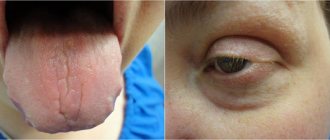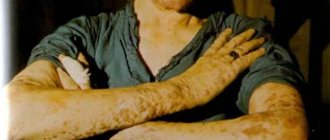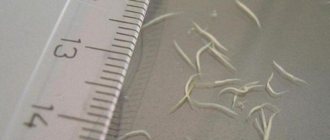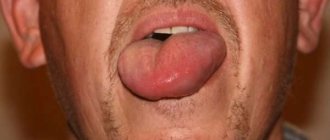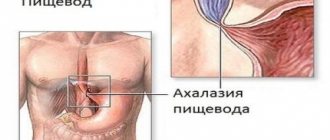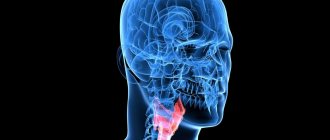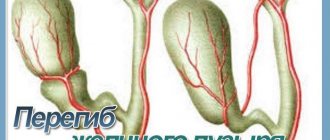You need to know how oral thrush manifests itself in adults, its symptoms and treatment features. Thrush is a fungal disease that affects the mucous membranes of the mouth, gums, pharynx and tongue. This disease got its name due to the formation of a white coating. Gradually, the plaque merges and forms spots similar to milk. This disease is quite common in older people. It is important to notice it in time, because if candidiasis starts, serious complications may arise in the future.
Candida - what is it?
Photo of the symptoms of the disease
Candida fungi are considered to be single-celled microorganisms. They are widespread in nature. These bacteria also live inside the human body.
Studies that have been conducted over the past 30 years have found that about 57% of the fungus is located on the surface of the mucous membranes. This organism usually provokes a dangerous disease such as thrush or candidiasis. The course of this disease depends on the state of the immune system.
Characteristics of fungi of the genus Candida:
- the cells of this species are round in shape;
- the size of the organisms is not large, it is only 10 microns;
- organisms of this species have increased resistance to the effects of adverse conditions. For this reason, they can survive in absolutely any environment;
- The most suitable temperature for the development of fungus is considered to be between 21 and 37 degrees Celsius.
The active development of Candidiasis begins when a person’s immune system and protective functions of the body weaken. If you believe the statistics, this disease can affect the mucous membranes, oral cavity, and genitals. Therapy is complicated by the fact that the disease does not manifest itself immediately.
Proper nutrition
How to treat oral thrush on your own? You can relieve symptoms on your own without seeking medical help. Let us remember that this is possible only at the initial stages of the development of the pathology, until the plaque has spread to the entire oral cavity. We’ll look at how to treat fungus in the mouth with folk remedies a little later, but for now let’s talk about an integral part of home therapy – diet.
To limit the development of Candida fungus, it is recommended to completely eliminate foods containing yeast and avoid seasonings, spices and spicy foods.
Until the plaque disappears, it is better to give preference to warm, semi-liquid dishes. Doctors recommend excluding the following foods from your diet:
- mushrooms in any form;
- strong tea, coffee;
- sour and sweet fruits;
- soda;
- alcohol;
- meat and fish of fatty varieties;
- confectionery products.
An approximate diet would look like this:
- freshly squeezed juices and herbal teas;
- any vegetables and herbs;
- porridge;
- nuts;
- lean meat broths;
- yeast-free bakery products;
- milk and cottage cheese.
Following a strict diet is not an independent type of therapy, but a balanced diet will significantly speed up the healing process.
Oral candidiasis
Photo of the manifestation of the disease
Candidiasis (its form is considered to be thrush) is an oral disease caused by fungi of the genus Candida. In rare cases, thrush appears due to exposure to an infection that can enter the body from the outside.
Often this disease manifests itself in children, especially infants. It may occur due to the fact that children often put dirty toys and other objects in their mouths. But at this age, thrush is much easier to tolerate.
However, candidiasis can also occur in adults. Those who have to wear dentures are especially susceptible to this disease. Under these devices there is an accumulation of food debris, which creates favorable conditions for the proliferation of pathogenic organisms.
But these are not all the reasons that can provoke thrush. There are a number of reasons that can cause this disease:
- weakening of the protective properties of the immune system. This condition occurs when there is an insufficient number of immune cells during illness. This usually occurs with endocrine disorders, hepatitis, HIV infection, signs of tuberculosis, and also during gastritis with a reduced level of acidity;
- In women and men, thrush can occur as a result of taking oral contraceptives. The use of COCs causes a change in the natural level of hormones and leads to the proliferation of candidal fungi in the oral cavity;
- During pregnancy and breastfeeding, women experience changes in hormonal levels. As a result, a white coating often forms on the oral mucosa;
- oral thrush may be the first symptom of type 2 diabetes;
- taking medications regularly. Cytostatic and corticosteroid medications have a negative effect on the immune system and also reduce the body’s defense reactions;
- subject to long-term antibacterial treatment. If you take antibiotics for a long time, this can cause the removal of pathogenic and natural microflora. But candida has increased resistance to this group of drugs, so they will begin to actively develop and multiply;
- thrush can occur due to a lack of certain vitamins - group B, C, nicnic acid. Also, this disease can cause low synthesis due to dysbiosis;
- various bad habits. Thrush in the oral cavity can be caused by smoking, increased consumption of alcoholic beverages, and drug addiction;
- treatment of malignant tumors. The use of chemotherapy and radiation therapy greatly affects the state of the immune system. Against this background, the development of oral thrush may begin;
- injury to mucous membranes from fillings, sharp edges of teeth, crowns. All this causes the appearance of white plaque on the surface of the gums and tongue.
Provoking factors
Thrush develops due to a decrease in the body's protective functions. The immune system can independently fight fungus or bacteria, but only when it is in a normal state. When the resistance of the protective barrier decreases, pathogenic microflora in the body, including fungus, progresses.
Most often, oral candidiasis is diagnosed in women during pregnancy. In men, this disease is very rare. Smoking is a predisposing factor in this case, since tobacco smoke disrupts the natural microflora of the oral cavity.
Thrush is an infectious disease that can be transmitted from one person to another: through kissing, sexual contact, and even through household contact, when using other people’s hygiene products.
The risk group includes:
- Persons using removable dentures.
- Taking corticosteroids by inhalation.
- Undergoing antibacterial or hormonal therapy.
- People who take drugs and abuse alcohol.
- HIV infected.
More than anything else, the development of candidiasis in an adult is facilitated by damage to the mucous membrane.
Symptoms of oral thrush in adults
Oral candidiasis is not that difficult to identify. The first signs of thrush in the mouth may be the appearance of white cheesy formations on the surface of the gums, tongue, and larynx.
The following symptoms of oral thrush in adults are distinguished:
- The appearance of white plaque in the form of plaques. Areas of the mouth may be covered with a white-gray coating. For this reason, this disease is called “thrush”;
- When removing plaque, ulcers may form with bleeding;
- There is often an unpleasant odor from the mouth. This symptom occurs due to the fact that some difficulties arise in maintaining hygiene, and signs of infection in the mouth over time spread to the gums, tongue, throat area and can reach the tonsils;
- Increased body temperature due to the appearance of an inflammatory process;
- There are feelings of discomfort - severe itching, tingling, pain;
- If the signs of candidiasis spread to the tonsil area, this may cause the sensation of a foreign body in the throat. The patient may have difficulty swallowing, problematic eating, and shortness of breath;
- Children often develop jams. These are microcracks in the corners of the mouth, which crack and bleed with slight movement.
But the main signs that you should immediately pay attention to are white plaques in the mouth. They can be in the form of spots that look like milk or cottage cheese. It is important to immediately consult a doctor who will conduct the necessary examination and determine effective therapy that will help cure an adult from oral thrush.
Forms
Features of the course of the disease and characteristic signs differ in different forms. Manifestations depend on the patient’s immune status, his age, and the presence of concomitant diseases. According to the type of pathological process, the following types are distinguished.
- Acute pseudomembranous.
- Acute atrophic.
- Chronic hyperplastic.
- Chronic atrophic.
Acute pseudomembranous
The most common form of the disease, which is popularly often called “thrush” due to the similarity in appearance of the gray-white coating with cottage cheese or milk. Most often, the disease affects young children, for whom treatment is quite easy if it is started in a timely manner.
In the absence of the proper level of sanitation of the oral cavity, the affected area increases, whitish plaques merge with each other, and when they are removed, the eroded surface of the mucous membrane is revealed. Sometimes there is so much curdled coating that it covers the entire back of the tongue, giving it an unnatural color. If the process affects the deep layers of soft tissue, then the affected areas turn brown and bleed.
Characteristic symptoms:
- discomfort in the mouth increases when eating food, which is why children refuse it;
- the daily routine is disrupted, babies sleep poorly, become capricious and restless;
- hyperthermia up to 38-39 °C may appear;
- the child develops a candidal infection covered with a dirty gray coating, which occurs due to the habit of sucking a finger or toys;
- in adults, candidiasis is a concomitant pathology with diabetes mellitus, tumors and blood diseases.
Acute atrophic
It is necessary to differentiate from manifestations of allergies in the mouth that occur when wearing removable dentures made of acrylic, as well as from the spraying of metal elements of tooth-replacing structures.
The patient's complaints and external manifestations of the disease have distinctive features:
- the patient notes discomfort in the mouth and hyperemia of the mucous membranes, which occurs due to the development of xerostomia;
- When the disease affects the tongue, it acquires a crimson-red hue, becomes shiny and dry. The filiform papillae located on the back are atrophied;
- pathological foci penetrate deep into the folds of the tongue, making it difficult to cleanse - Candida colonies seem to merge with the soft tissues, forming one whole.
Chronic hyperplastic
It is characterized by a thick, firmly fixed coating that looks like white-yellow dense peas, the favorite location of which is the back of the tongue and the roof of the palate. Differential diagnosis is carried out with lichen planus and leukoplakia.
The patient complains of:
- burning sensation, tingling and itching in the mouth;
- spontaneous soreness;
- a dense film of pale yellow color covering the mucous membranes.
When trying to remove plaque, pain occurs, scraping brings almost no results, and a bleeding, hyperemic surface of the tongue and hard palate opens.
Chronic atrophic
Most often it develops in elderly people who wear removable plastic dentures in their mouths. They note dryness and burning of the mucous membranes. Plaque is contained in small quantities, but it is difficult to remove.
The disease has characteristic pathological manifestations.
- Fungal jams.
- Eroded areas located under the prosthetic bed.
- Papillomatosis.
- Atrophy of the tongue papillae.
This type of candidiasis can be easily distinguished from other types by the triad of inflammation: the tongue, corners of the mouth and palate are affected.
Diagnosis of the disease
It is quite simple to independently determine the presence of candidiasis; just look at a photo of thrush in the mouth of adults. Knowing its first symptoms – cheesy formations on the mucous membrane – will also help.
In laboratory conditions, oral thrush in adults is diagnosed using special equipment. But in order for the study to be able to accurately determine the presence of this disease, it is necessary to observe important features:
- diagnosis is performed at the beginning of the disease and after the fungal infection has been cured;
- It is not recommended to brush your teeth before the examination;
- you need to eat about 4 hours before visiting the doctor;
- during the examination, a scraping is taken from the surface of the mucous membrane of the oral cavity or denture;
- the diagnostic process is performed using a light or fluorescent microscope;
- confirmation of the diagnosis is the identification of budding cells with pseudomycelium.
With the help of bacteriological diagnostics, it is possible not only to detect the presence of a fungus, but also to determine its sensitivity to antifungal drugs.
Treatment of advanced thrush
If the disease is in a chronic stage, then local medications or folk remedies will not work. The doctor must prescribe systemic medications.
Among the most popular and effective medications against oral candidiasis are:
- Polyenes (Natamycin, Levorin and Nystatin).
- Echinocandins (“Caspofugin”).
- Allylamines (Lamisil and Terbinafine).
- Triazoles ("Intraconazole" and "Fluconazole").
The effectiveness of these drugs is aimed at destroying fungal microflora throughout the body. Medicines are taken orally, after which the active substances penetrate the bloodstream and suppress the activity of the thrush pathogen. This treatment gives faster and more lasting results.
Please note that all of the drugs listed above have a number of contraindications and can cause serious complications. That is why a preliminary consultation with a doctor is mandatory.
In order to select the most effective remedy for the treatment of oral thrush, it is necessary to undergo diagnostics. Only an experienced doctor, based on the results obtained, can prescribe the most effective and safe therapy.
Treatment of candidiasis at home
Treatment for oral thrush in adults is selected depending on the form of the disease, age, extent of plaque, the main causes of candidiasis and many other factors. If the diagnosis accurately reveals the presence of candidiasis, the doctor should immediately select effective treatment therapy.
Candidiasis can be treated with antifungal medications. These remedies have a broad effect and quickly eliminate all the symptoms of this disease. But before you begin treatment for oral thrush in adults, you must carefully study the indications, contraindications and side effects of medications.
But there are other treatment methods with which oral thrush can be treated - traditional methods, taking vitamins. But in any case, it is worth carefully studying their main features.
Antifungal drugs
Regardless of what methods were used to determine the disease, the use of antifungal drugs may be prescribed to treat it. These remedies can eliminate all the unpleasant signs of this disease almost after the first use.
General antimycotic drugs are usually prescribed by the attending physician, but after diagnosis and passing the necessary tests. The fact is that many of them have contraindications for which these drugs cannot be taken.
Antifungal therapy for oral candidiasis can be carried out using the following medications:
- Amphoglucamine. This product is available in tablet form. It is recommended to use for fungal infections of the mouth, stomach, and intestinal tract. The dosage is prescribed by the attending physician. It should be used for 2 to 4 weeks depending on the form of candidiasis. Do not use if you have chronic liver or kidney diseases, during pregnancy, or if you have hypersensitivity;
- Diflucan. This is an antifungal agent with a broad spectrum of action. When applied, it causes disruption of the fungal membrane, and then its death. It is recommended to start with a dose of 0.4 grams per day with a further transition to a dosage of 0.2 grams per day. The course of treatment is at least two weeks. Sometimes side symptoms occur - disruption of the digestive system, a feeling of a metallic taste, a disorder of the nervous system;
- Nystatin. This remedy is considered the best for the treatment of candidiasis in the oral cavity. While taking it, the development and reproduction of fungal spores stops. This medication also prevents the spread of candidiasis throughout the body. It is recommended to take 500,000 units per day. The period of admission is 2 weeks.
Treatment of mucous membranes with imidazoles
In the treatment of oral candidiasis, topical imidazoles can be prescribed. These include an effective drug in the form of an ointment - Clotrimazole. This product can also be produced in the form of suppositories, tablets, and solution.
Features of using Clotrimazole ointment or gel:
- Before using the drug, rinse the mouth in advance;
- When rinsing, the cheesy secretions are partially removed. This will improve the penetration of the active components of the drug into the structure of the mucous membrane;
- It is recommended to apply the gel using a finger or a cotton swab on the surface of the oral mucosa;
- You need to apply it twice a day for a week.
Vitamins and minerals for candidiasis
How else can you treat oral thrush in adults? If this disease is caused by a lack of vitamins, then in these cases it is recommended to take vitamin and mineral complexes. But vitamins are taken in combination with antifungal medications.
Additionally, the doctor may prescribe lozenges that can boost the immune system. These include the following:
- Calcium in tablet form;
- Vitamin preparations containing vitamins B, C, PP.
Traditional medicine recipes
Traditional medicine can quickly eliminate thrush in the mouth, but they should be used at the initial symptoms of this disease. These treatment methods can be used for children and during pregnancy.
The most effective include the following:
- Calendula infusion. Pour 1 large spoon of dry mixture into a glass of hot water and leave to stand for about an hour. The prepared tincture can be drunk after meals as tea. For rinsing, you can use an alcohol tincture, which can be bought at a pharmacy;
- Lugol's solution. This pharmaceutical product helps to quickly eliminate fungal infections, signs of inflammation, and bleeding. It is recommended to rinse your mouth with this product twice a day;
- Garlic. This herbal component provides a boost to the immune system and can also quickly eliminate oral candidiasis. To do this, you need to rub several cloves to a paste. Next, the affected areas of the mucous membrane are treated with the mixture. This needs to be done several times a day;
- St. John's wort decoction. A large spoonful of dry herb collection is poured into a saucepan and filled with a glass of hot water. Next, everything needs to be boiled for 10-15 minutes. Rinsing with this product is performed for 2 weeks 4-5 times a day.
All these products can be easily used at home. Herbal components do not have harmful effects, for this reason they can be safely used for people and women during pregnancy. But medications should be prescribed by the attending physician, but only after a complete examination and identification of the cause of the disease. If you follow all the doctor’s recommendations, you can quickly eliminate all the unpleasant symptoms of oral candidiasis.
Traditional Treatments
An accurate diagnosis can only be made by observing the complete picture of the disease. Based on this, the correct treatment regimen is selected. To identify candidiasis, the attending physician usually takes a scraping from the oral mucosa. The procedure is performed in the morning, on an empty stomach, before brushing your teeth. If the diagnosis is confirmed, the patient is prescribed the following medications:
- lozenges: Nystatin, Diflucan, Lysozyme, Levorin. They are taken in accordance with the instructions, which indicate the recommended dosage. The tablets are dissolved until completely dissolved;
- ointments. Products based on clotrimazole and decamine have proven themselves to be effective. These are topical medications that are placed on a gauze cloth and applied to the affected area. Additionally, the mucous membrane is treated with brilliant green or fucorcin;
- rinsing. You can wash the mucous membranes with preparations based on hexoral or chlorhexidine. It is important to remember that these are products for external use, so they should not be swallowed . In addition, soda or a weak solution of potassium permanganate are suitable for rinsing.
Sanitation of the oral cavity helps cure candidiasis. Caries creates a favorable environment for the development of fungus. Treating the diseased tooth will destroy this environment, and further spread of thrush will stop.

